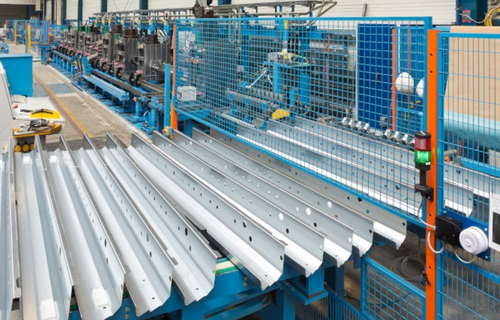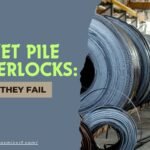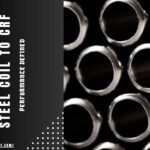Steel gets used everywhere, but how it’s made affects how it performs. Two sheets might look similar on the surface. One feels slightly smoother. The other carries small marks from heating.
The difference often traces back to just one thing—how the steel was processed.
If you’ve worked around fabrication or assembly long enough, you’ve seen both. What matters is knowing which one makes more sense for your job. Here’s what actually separates cold-rolled and hot-rolled steel in practical terms.
The Core Difference Lies in Temperature and Timing
Hot-rolled steel is formed while the metal is still at a high temperature—typically over 900°C.
At this stage, steel is soft and easier to shape.
After rolling, it’s cooled in the open, so the surface often has scale or slight warping. That’s normal.
Cold-rolled steel starts as hot-rolled steel but goes through more processing after cooling.
It’s passed through rollers again at room temperature. This extra step increases its strength and tightens the dimensional accuracy.
That one extra phase gives cold-rolled steel its edge in applications that need higher finish and tighter tolerances.
Surface Finish and Precision Show Up in the Details
Cold-rolled steel looks and feels cleaner. It has a smoother surface, which makes it a better base for painting or plating.
The edges are sharper. The thickness is more consistent. It’s suited for projects where exact fit matters.
Hot-rolled steel has a rougher texture. You’ll often spot mill scale, rounded edges, and a slightly uneven thickness, especially in thicker sections.
It’s fine when the finish is not critical—like in structural beams or reinforcements.
At Cosmic CRF, our cold-formed profiles go through calibrated rollers that help maintain cross-section geometry within tight tolerances. That detail is critical when we’re building parts used in transport and engineering assemblies.
Formability and Stress Response Vary with Each Type
Hot-rolled steel is more malleable. It can take on larger, more drastic shapes without cracking. That’s why it’s often used for I-beams, plates, and general construction parts.
Cold-rolled steel, while harder, is also less forgiving during bending or heavy forming.
You need to know your bend radius, especially for sharp angles. But that same hardness is what gives it better strength in thinner gauges.
This makes cold-rolled steel a smart choice for rail coach underframes, automotive components, and even storage systems—anywhere you want strength with minimal material weight.
Cost Often Reflects the Processing Depth
Hot-rolled steel tends to be more cost-effective, especially when you’re buying bulk sections for structural use. The process is faster, and the material doesn’t need much finishing.
Cold-rolled steel costs more because of the added processing, better finish, and more consistent measurements. But you’re paying for the accuracy, and in many cases, avoiding extra machining or surface correction.
If your application requires clean joins, painted finishes, or fine tolerances, cold-rolled often offsets its cost through saved work downstream.
Use-Cases Depend on What the Final Part Needs to Do
Hot-rolled steel works well for outdoor framing, base plates, railway track structures, and similar heavy-use applications where surface finish is secondary.
Cold-rolled steel is better where shape consistency, finish quality, and profile strength need to align.
This includes CRF sections used in smart city infrastructure, support profiles for wagons, and even solar panel frames.
Our team at Cosmic CRF works with cold-rolled sections day in and day out—some for rail use, others for building applications. What ties them together is that they’re shaped for precision, not volume alone.
Final Thoughts
Both hot-rolled and cold-rolled steel serve a purpose. The difference is in what happens after the first rolling.
That small shift in processing changes how the steel behaves, how it looks, and where it fits best.
At Cosmic CRF, our focus is on cold-rolled formed steel—made to spec, formed with control, and used in parts that need to fit without guesswork. From coach components to pile profiles, we see how that consistency plays out over time. If you want to know more, please get in touch with us today.




